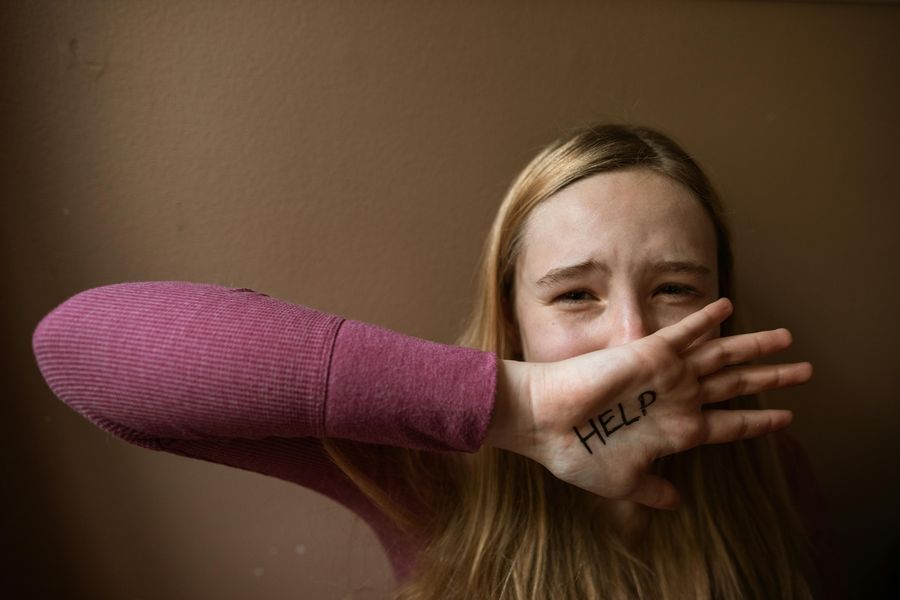Domestic Violence: Prevention and Solutions
Are you worried that you or someone close to you may be a victim of domestic violence? This is a serious issue that affects millions of people every year, and it is important to take action to protect yourself and those you love.
Defining Domestic Violence
Domestic violence is any form of abuse that occurs between people who share a domestic relationship, such as a spouse, a partner, or family member.
This can take many forms, including:
- Physical assault
- Verbal attacks
- Emotional manipulation
Regardless of the type of abuse, domestic violence can have serious effects on the victim’s psyche and overall well-being.
Impact of Domestic Violence on Victims
Loss of Individuality and Self-Esteem
One of the most significant impacts of domestic violence is its effect on the victim’s individuality. Many victims begin to feel like they don’t matter, that their opinions don’t count, and that they are simply there to be used and abused.
This can lead to a loss of empathy towards others, as victims may begin to focus solely on their own survival. Additionally, victims of domestic violence often experience a loss of confidence in themselves and their ability to make decisions.
Isolation and Dependence
Domestic violence can also lead to isolation and a sense of incompetence. Victims may begin to feel like they are unable to handle social situations or interact with others.
This can lead to a dependence on the abuser, as they may see the abuser as the only person who can “protect” them. Victims may also feel helpless and unable to control their own lives, decreasing their self-esteem and causing feelings of depression and anxiety.
Short-Term Strategies for Prevention
The effects of domestic violence can be long-lasting and can negatively impact an individual for years to come. That’s why it is critical to be aware of short-term strategies for preventing domestic violence.
- Seek Assistance from Programs: Programs designed to help victims of domestic violence can offer critical resources such as food, shelter, and guidance to individuals who may be particularly vulnerable to abuse.
- Focus on Safety and Protection: This means defending the victim if you witness them being abused, offering assistance and advocacy, and creating a support network to ensure that the victim feels safe and protected.
Long-Term Strategies for Prevention
Empowering and Educating Victims
One of the most effective long-term strategies for domestic violence prevention is empowering and educating victims.
Community programs that focus on educating the public about the effects of domestic violence can help create an atmosphere that encourages victims to seek help. Additionally, these programs can help reinstate a life without violence for victims, affording them the freedom to regain control over their lives.
Empowerment programs can improve a victim’s sense of self-worth and provide them with the skills needed to create a safe and healthy life for themselves and their children.
Public Education and Prevention
Public education on prevention and intervention is another essential long-term strategy for preventing domestic violence.
This education helps build a strong foundation for healthy relationships that promote mutual respect and encourage the establishment of healthy limits. This education seeks to challenge the cultural messages and role models that have contributed to the perpetration of domestic violence.
Prevention and intervention strategies can be reinforced through community education campaigns that impart the importance of having healthy relationships. Culturally-sensitive materials aimed at different communities and backgrounds can teach parenting skills.
There is also a need to integrate information into school curricula that teaches young people how to nurture healthy relationships.
Solutions for Victims of Domestic Violence
Crisis Intervention Strategies
In addition to the short and long-term strategies mentioned earlier, there are other solutions that can help victims of domestic violence.
The provision of resources such as crisis intervention services, crisis hotlines, emergency residential facilities, medical services and transportation networks, and legal intervention helps ensure that victims have access to the help they need when they require it.
Emotional Support and Self-Help
Emotional support is also vital in the fight against domestic violence.
Self-help support groups, assertiveness training, and educational sessions can build self-esteem and self-confidence. These supportive tools can assist survivors in overcoming emotional pain and enable them to move forward in their lives.
Advocacy and Legal Assistance
Advocacy and legal assistance also play a critical role in providing solutions to domestic violence.
Legal assistance in gaining access to children, property distribution, and financial support, as well as the issuance of restraining orders and public assistance benefits, can help assist victims in recovery.
Immigration Support
Immigration is another area that can have a significant impact, with special provisions being made for immigrant victims that make it easier for them to access legal and medical services.
Supplementary Support Services
Finally, supplementary support services are essential for victims of domestic violence.
These support services can include housing, childcare support, community services, and economic independence. Economic support for victims can help them break free from the cycle of violence by providing alternatives for women to escape abusers and establish a secure and safe living environment.
Preventing Domestic Violence and Ensuring Victim Safety
Cultural and Community Messages
One way to prevent domestic violence is through cultural and community messages that educate people to respect one another and treat people with kindness and compassion. These cultural messages must address the root causes of domestic violence and challenge traditional gender roles that often lead to domestic violence.
Role models within communities must model healthy relationships, including expressing emotions in a non-violent way.
Early Prevention in Childhood
Prevention must start as early as childhood.
Creating a world where children are exposed to healthy relationship dynamics is crucial to the fight against domestic violence.
Penalties for Perpetrators
To further prevent domestic violence, there must be consistent penalties for the perpetrators of domestic violence.
Funding is necessary to ensure that support services are available to victims, including family courts and economic independence programs. The justice system must not be partial and biased towards abusers.
A system of accountability for abusers is essential for prevention efforts. This structure can effectively address the issue of domestic violence in a manner that is fair and just for all parties involved.
Safety Planning for Victims
In addition to prevention strategies, measures must be taken to ensure the safety of domestic violence victims.
Victims must have a safety plan in place during emergencies.
The safety plan should provide a clear and effective strategy for leaving a dangerous situation. This plan should include an emergency escape plan, with easily accessible items such as keys, important documents, and an extra set of clothes.
A code word or signal can be set up that will alert others that there is an emergency.
Safety Planning for Children
Safety planning must also involve children.
While difficult, teaching children to call 911 in cases of emergency situations can be lifesaving. Children should be taught how to communicate during a crisis and what steps to take to protect themselves during an emergency.
The issue of domestic violence affects children deeply and can lead to significant emotional and psychological trauma. Involving children in safety planning can assist them to feel safer and more empowered.
In saying that, children must also be protected when leaving a domestic violence situation permanently. It is significant to have a safety plan in place before involving children in this process. Seek counseling or legal assistance and gather as much information as possible in this process. Work with a domestic violence advocacy group who can support you with resources and knowledge.
Conclusion
Domestic violence is a problem that affects millions of people worldwide. Prevention through cultural messages, accountability for perpetrators, and funding for support services is critical in addressing domestic violence.
Comprehensive safety planning must be available to all victims of domestic violence that incorporates the needs of children affected by the issue. A comprehensive approach is necessary to address the root causes of domestic violence and ensure that victim support is readily available.
By working together, we can prevent domestic violence. Remember, domestic violence is not acceptable, and it is up to all of us to take action.



